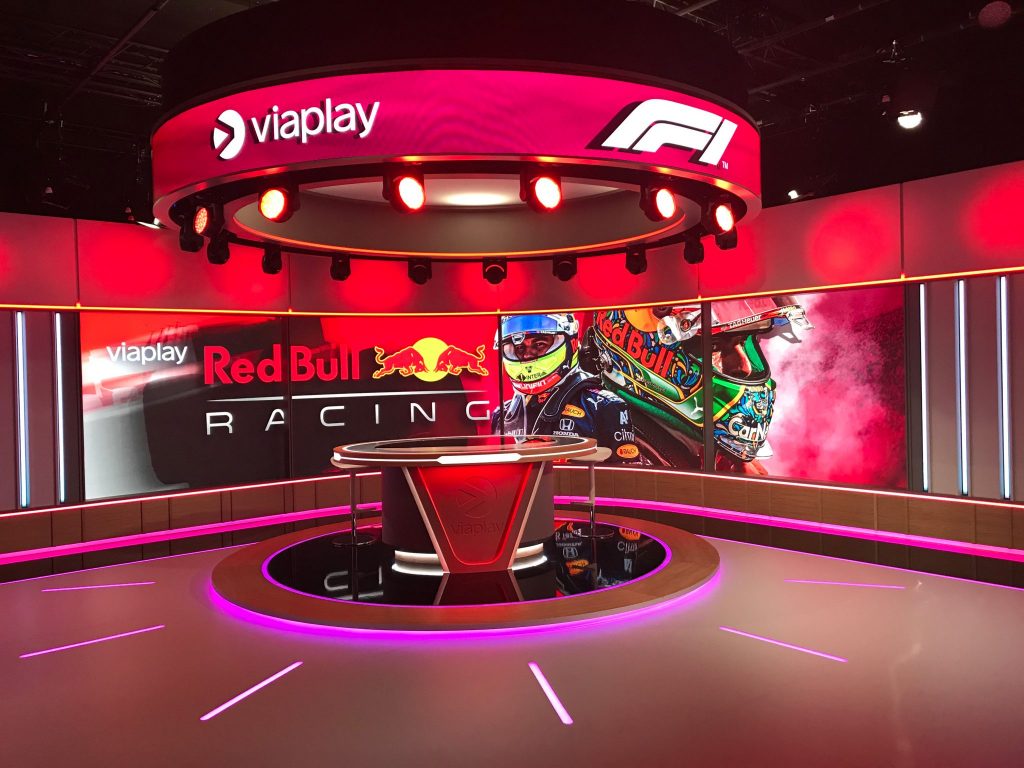How do you make sure that your TV channel stands out from the crowd in a world where your viewers have an infinite supply of video content available to them 24/7? Making audiences tune in every day not only demands highly engaging, distinct productions, but also eye-catching LED studio backdrops that inform, connect, and engage.
To deliver this visual potential, these backdrops need ultra-dependable media servers and video processing solutions to enable flawless performance day in, day out. Also, as production time is highly valuable, your setup needs to be flexible and highly adjustable as your studio evolves over time.
Flexibility aside, technical perfection is equally essential. In a TV studio the camera view is all that matters, and flicker and artefact-free video, at low latency, requires premium technology. Finding the right manufacturer that understands the high demands needed to deliver the highest quality is key. In this blog, we will cover choosing the right partner to give your channel a visual boost and take your viewing figures to the next level, while still giving your producers the peace of mind to focus on creating outstanding productions.
Multipurpose
Consider how you can use your studio space for several production outputs. While you will undoubtably have a large, extra-wide LED screen behind your talent, the latest trend is for other story telling areas around the studio. This approach goes beyond the need for stand up and soft seating areas as audiences today receive their news over the air, on their computer, as well as on their smart devices, which all require different format displays for the best effect. While a widescreen or LED wall will work in the home on a widescreen display, most smart device users prefer to consume their material in portrait format.
Why should your presenter screen not match that format for maximum effect? Typically, broadcast equipment does not cater easily to this format, so you will want to consider adding in these elements now to your media playback and video processing workflows.
Time for change
Change in the broadcast environment can often be the only constant!
TV studios, especially for news and current affairs programs, are increasingly demanding multipurpose spaces that can be easily rebranded for different programs. Other challenges include quick changing content on the fly, as well as being able to easily add scenic elements across different display types. Before you are asked to make changes to your studio, consider how you can easily use the same broadcast space to cover a multitude of programs to gain maximum use of your expensive studio setup. To do this you must be able to change the look and feel of all displays quickly and easily. Once again, this comes down to carefully designing your playback and display workflows so that changeovers are seamless and stress free.
The last thing you will want to do on air is to fire up multiple PC applications to change scenes or looks on the fly. Therefore, control is key when making multiple studio rebrands daily, as even the most powerful peripheral gear is useless without it. The best hardware solutions can be controlled in several ways, including through broadcast control systems, from touch screen panels, over MIDI, or direct from your lighting desk via DMX.
No delays – ever
For news, sports and entertainment shows, low latency video performance matters as you cannot afford to risk anything less than lip sync perfection. This performance must be maintained even if the video format changes, or multiple video windows are on your LED display. We have all witnessed repeat screens on an entertainment show where the performer is shown and there are several frames difference which looks, at best, disjointed for the viewer at home.
This performance needs to be across all your source signals and allow for genlocking to your cameras to remove any image flickering. Of course, your sources could be IP, broadcast, or AV, and at differing resolutions and frame rates.
This can be a huge challenge even before you choose to add several sources on your display or choose to switch between your sources. Typically speaking, every process that is added can increase latency by additional frame of delay, which can quickly add up to several frames of delay, becoming increasingly unacceptable to your viewing public. When choosing a video processer, ensure it can cross the boundaries of IP, broadcast, or AV without challenge.
Timesaving scenics
An emerging area for broadcast is the use of LED Volumes for virtual production for dramas and episodics. Championed in the movie industry, this technology delivers increasingly photo realistic backgrounds and are now becoming common place, and when combined with high-power media servers, is changing the way that broadcast content is being made.
Instead of a green screen, LED backgrounds seamlessly allow the production team and the acting talent to see and interact with what is happening around them, which creates a much more natural flow to a production as well as removing the chroma keying in post-production. Additionally, behind the camera LED Volumes can also be used to add dynamic light, for example, fireworks or other effects. In turn, this offers your viewers a stunning and breath-taking experience while offering easier production and quicker turnaround times between scenes, saving the channel both time and money. However, choosing the right solution for you is essential, as you will require fail proof solutions so that your production team has the peace of mind to focus on their craft.
Finding the right solution
Download the full version of this blog in order to learn about the solutions tvONE and Green Hippo can offer:
